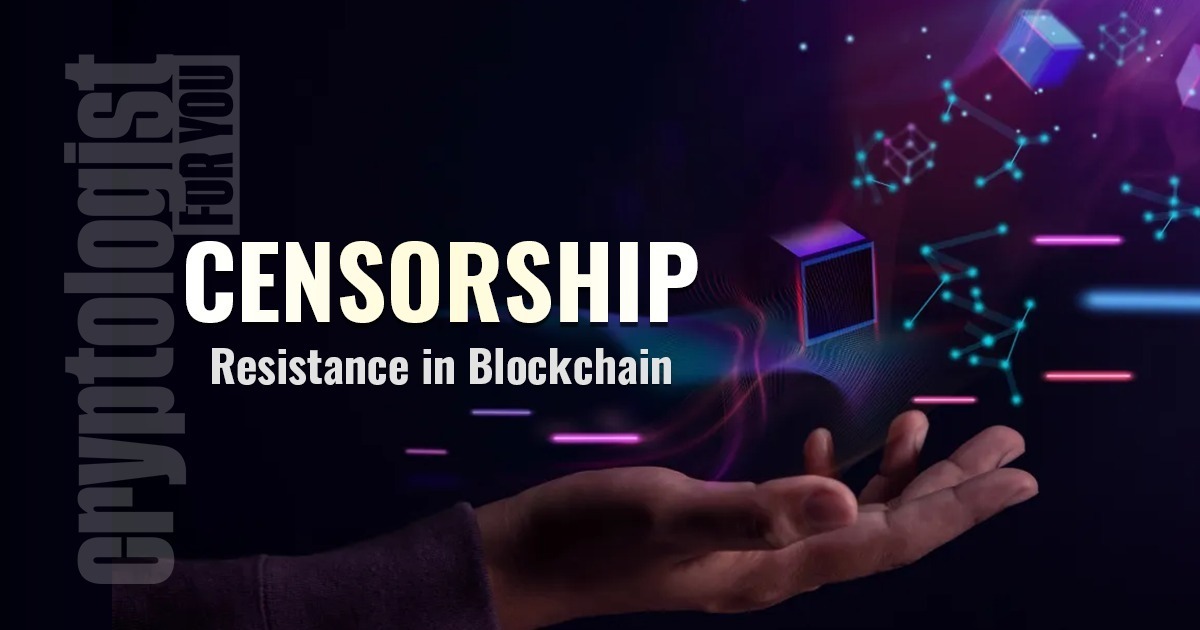31 January, 2024 | Cryptocurrency Blog
Introduction:
Understanding Blockchain Censorship Resistance:
Resistance to censorship in the context of blockchain encompasses the technology’s ability to function independently and without control or manipulation by a central authority. Unlike traditional systems where a single entity or governing body can determine the flow of information, blockchain is based on a decentralized network of nodes that ensures that no single entity has the power to censor or change data. This decentralized architecture is crucial for maintaining the transparency, security and integrity of the information stored on the blockchain.
Key Features of Blockchain Censorship Resistance:
Decentralization:
The cornerstone of blockchain resistance to censorship is decentralization. Instead of relying on a central authority to verify and record transactions, blockchain operates on a network of distributed nodes. Each node maintains a copy of the entire ledger and transactions are only added once consensus is reached between the majority of nodes. This decentralized structure eliminates the single point of control, making censorship extremely difficult.
Immutability:
Immutability is a key feature that contributes to censorship resistance. Once data is added to a block and embedded into the blockchain, it is virtually impossible to change or delete. The cryptographic hash functions that connect each block ensure the integrity of the entire chain. Attempts to manipulate historical data would require impractical computing power, which would provide strong protection against censorship.
Smart contracts:
Smart contracts, i.e. self-executing contracts whose conditions are encoded directly in the code, strengthen censorship resistance in blockchain applications. These contracts automatically execute predetermined actions when certain conditions are met, eliminating the need for intermediaries. By operating according to code rules rather than human discretion, smart contracts reduce the risk of contract censorship by ensuring transparent, automated execution.

Applications of Censorship Resistance:
Financial Inclusion:
Blockchain’s resistance to censorship has profound implications for financial inclusion.In regions where traditional banking infrastructure is missing or limited, blockchain-based cryptocurrencies offer a decentralized alternative. Individuals can conduct financial transactions without relying on central authorities, promoting greater financial inclusion.
Freedom of expression:
The decentralized nature of blockchain empowers individuals by providing platforms for uncensored communication and expression. Social and communication networks based on blockchain technology protect freedom of expression and protect individuals from the threat of censorship by centralized bodies.
Transparent supply chains:
Blockchain censorship resistance plays a key role in ensuring transparent and traceable supply chains. By recording all transactions and goods movements on the blockchain, stakeholders can reduce the risk of fraud and manipulation. A decentralized ledger ensures that information remains intact and unchanged throughout the supply chain.
Conclusion:
The power of censorship-resistance in blockchain extends far beyond its roots in cryptocurrency. It stands as a testament to the technology’s commitment to preserving freedom, transparency, and security in an increasingly digitized world. As blockchain continues to redefine industries and reshape the way information is handled, its censorship-resistant nature remains a potent force in championing the principles of decentralization and individual empowerment. The journey toward a more secure, transparent, and censorship-resistant future is undoubtedly being paved by the revolutionary capabilities of blockchain technology.
Hopefully, you have enjoyed today’s article. Thanks for reading! Have a fantastic day! Live from the Cryptologist For You Floor.


